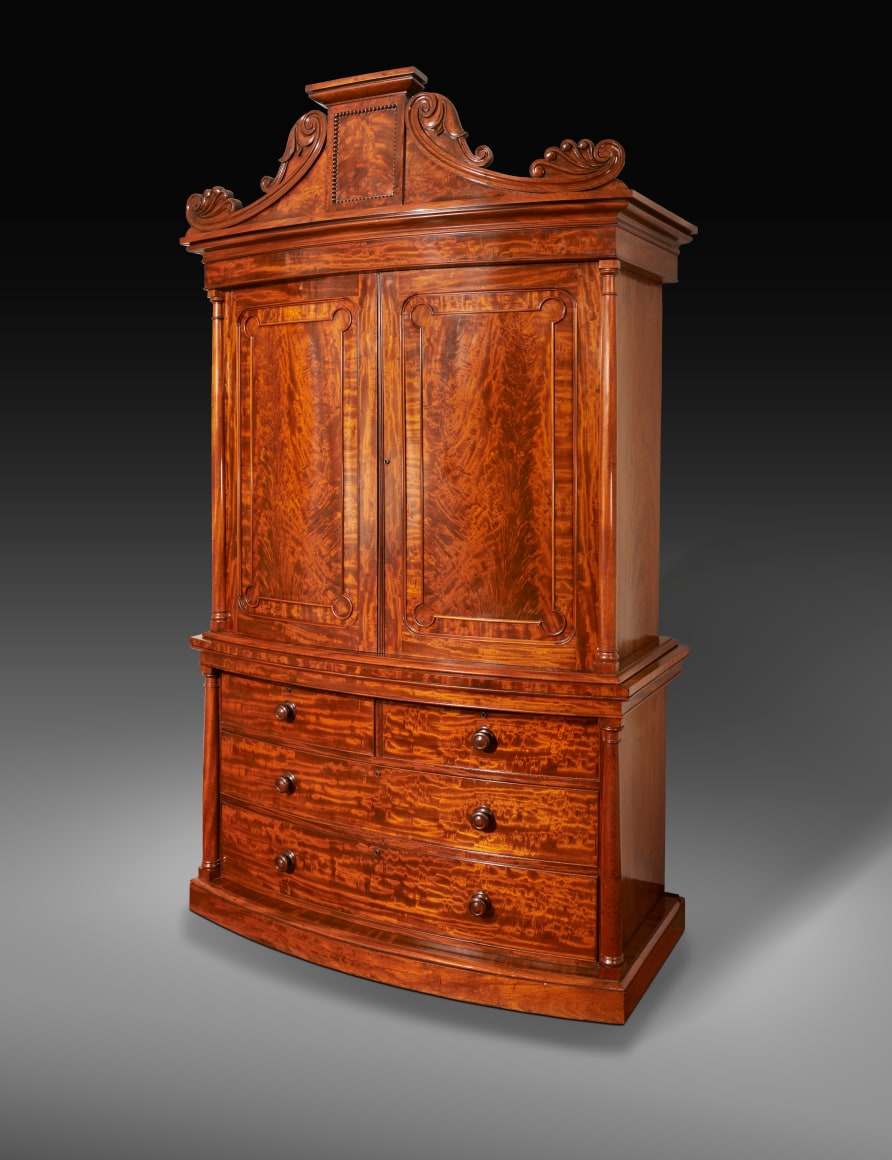Neo-Classical Linen Press, about 1825
Boston, likely under the supervision of Thomas Seymour (1771–1848; active alone 1804–25)
Mahogany (secondary words: red or green ash and Eastern white pine, with brass hinges and keyhole escutcheons
96 3/4 in. high, 55 1/4 in. wide, 24 1/2 in. deep
Although unlabelled, this linen press is equal in quality to certain pieces labeled by Emmons & Archbald, William Hancock, and Isaac Vose & Son, and is very possibly a product of the shop of one of them. The flaming matchbook veneers, the flawless attention to detail, the carved ornament, and the beautifully turned wooden knobs all attest to a cabinetmaking shop of ultimate quality.
Many of the design elements of the piece are clearly based on design book sources. For example, the general composition is closely related to Plate 2 in John Taylor’s The Upholsterers & Cabinet Maker’s Pocket Assistant of 1825. And Plate 25 likely supplied the basic design for the very elaborate cornice that crowns the piece. And there are many pieces illustrated in other London design books of the period, including George Smith’s Cabinet-Maker’s & Upholsterer’s Guide of 1826, that bear a strong generic relationship to details in the present piece.

